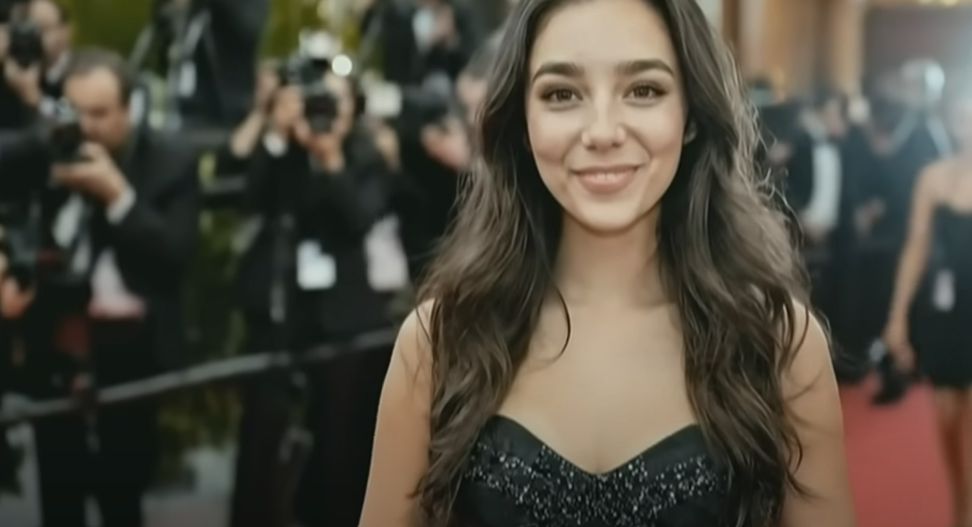Tilly Norwood’s ascent was incredibly successful at drawing attention—not because she is real, but because she isn’t. She made her debut with the kind of fanfare typically reserved for up-and-coming stars at Zurich’s film conference, and she has since become a focal point in discussions concerning performance boundaries, technology, and creativity. Executives looking for a fresh talent were fascinated by her well-crafted persona, flawless lines, and polished face, while actors were outraged.
SAG-AFTRA’s response was very clear: Tilly Norwood is a construct, not an actress, but her realistic design, and creativity should always be human-centered. However, the union’s sense of urgency in issuing this statement highlights the danger that many performers perceive. This controversy is reminiscent of times when digital streaming frightened musicians or when photography unnerved painters, and it represents yet another cultural reckoning.
Melissa Barrera, who starred in Scream, expressed her displeasure on Instagram, stating that any agent who pursues Norwood should be turned off by their human customers. Toni Collette, Mara Wilson, and others shared the same sentiment, and Ralph Ineson’s direct post—two dismissive words—encapsulated the unadulterated annoyance of artists who see their work turned into a commodity by algorithms. Speaking on The View, Whoopi Goldberg likened Norwood’s design to a patchwork quilt of legends, stating that she embodied “Bette Davis’ attitude and Humphrey Bogart’s lips,” a collage that felt especially unjust to those who dedicated decades to creating individual careers.
Actress Tilly Norwood – Bio and Career Information
| Category | Details |
|---|---|
| Full Name | Tilly Norwood (AI-generated actress) |
| Creator | Eline Van der Velden, CEO of Particle6 |
| Production Studio | Particle6 (London-based AI studio) |
| Associated Project | Xicoia, AI talent studio spin-off |
| First Appearance | July 2025, in short parody video “AI Commissioner” |
| Public Debut | Zurich Film Conference, September 2025 |
| Notable Traits | AI-generated character, British accent, brunette, photorealistic style |
| Industry Reaction | Backlash from SAG-AFTRA and Hollywood actors; interest from some talent agencies |
| Controversies | Debate over replacing human performers, questions of consent and compensation |
| Reference | Reuters |

However, the reaction has been nuanced for viewers. While some critics acknowledged their curiosity and pointed out that Norwood’s meticulously manicured Instagram already mirrored the look of actual celebrities, many others characterized the debut as dystopian. She comes across as highly adaptable due to her photogenic appeal and her ability to play several parts at once. Because she never ages and is always available, fans pointed out that she could play the lead in a romantic comedy one day and a sci-fi epic the next. In a field that is beset by scheduling conflicts and expensive delays, that consistency is extremely efficient.
Ironically, Norwood has already become a topic of conversation at press junkets and dinner parties despite having no past, scandals, or emotional scars. Her presence acts as a mirror, revealing our desire for novelty while simultaneously reflecting society’s fears of automation. Surprisingly, her presence has made actors much less patient who went on strike for months to avoid this very situation. She symbolizes, for many, the decline of artistic expression in favor of calculation.
But according to her creator, Eline Van der Velden, the project is about expansion rather than replacement. “A new paintbrush,” as she put it, is a metaphor that feels especially inventive in its optimism. In the same way that CGI, animation, and puppetry once created new possibilities without displacing live performance, she contends that AI ought to be viewed as an additional storytelling tool. Although it sparked some curiosity, her assertion that Tilly might eventually compete with Scarlett Johansson or Natalie Portman also showed her audacious faith in the potential of technology in entertainment.
But skeptics are unwavering. The hype, according to Yves Bergquist of USC’s Entertainment Technology Center, is “nonsense,” as true fan bases cannot be imitated. The fans of Scarlett Johansson respect her path, her demeanor off-screen, and her weaknesses. Norwood is unable to attend talk shows, fumble with interview questions, or burst out laughing at a host’s joke, no matter how realistic. Because of this lack of spontaneity, she is much less interesting, at least for the time being.
But history demonstrates that once innovations are rejected, they frequently adapt to them. Major productions now feature YouTube creators, who were once dismissed as amateurs. Once derided, TikTok influencers are now being courted by high-end brands. Rather than taking the place of celebrities like Margot Robbie or Viola Davis, Tilly Norwood might take a similar path, creating her own artificial niche. Her rapid adoption by studios as a cost-cutting measure rather than as an artistic experiment poses a risk.
Her dependability is what makes her appealing. She won’t ever request a raise in salary, get tired, or perform poorly on a given day. This stability is surprisingly affordable to financiers. For artists, it is a fear of existence. For viewers, however, curiosity may prevail. Should her debut feature film achieve even a small degree of emotional authenticity, she may be able to establish herself in the public consciousness.
The union’s response also draws attention to more serious compensation-related issues. Mara Wilson brought up an eerie question: why not employ one of the innumerable young actresses whose faces were utilized to create Norwood’s composite? There is still debate over the morality of using human labor to create artificial fame. It addresses more general issues of ownership, consent, and creative theft—issues that are especially pressing in this digital age.
Van der Velden maintains, however, that Norwood is art and not theft. “Audiences were equally skeptical of early CGI, but it became a mainstay in blockbusters,” she says. She is hopeful because she thinks that, if AI is used carefully, it could enhance narratives rather than replace them.

